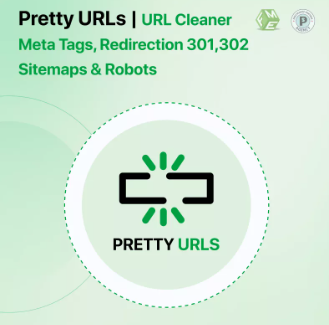In the world of e-commerce, a well-optimized website is critical to success, especially in a mobile-first era. A key factor in achieving this is having clean, concise, and readable URLs. For PrestaShop store owners, creating and managing PrestaShop friendly URLs is essential for improving search engine rankings and user experience. In this blog, we will explore the top 10 tips for perfect PrestaShop SEO URL success, ensuring your site stands out from the competition.
1. Enable Friendly URLs in PrestaShop
The first and most important step in optimizing your URLs is to enable PrestaShop friendly URLs in the back office. PrestaShop has built-in settings to help you create cleaner, simpler URLs.
Steps to enable friendly URLs:
- Go to your PrestaShop admin panel.
- Click on “Shop Parameters” and then “Traffic & SEO.”
- Toggle on the “Friendly URL” option to activate clean URLs for your site.
This will automatically remove unnecessary characters from your URLs, making them more user-friendly and SEO-compliant.
2. Keep Your URLs Short and Descriptive
When it comes to clean URLs in PrestaShop, less is more. Short URLs are easier for both users and search engines to read. Avoid long strings of words and focus on making the URL concise and descriptive.
For example, instead of using a URL like www.example.com/product-category/long-dress-women, try something simpler like www.example.com/women-dresses. This makes the URL more effective for both SEO and user experience.
3. Use Keywords in Your URLs
Incorporating relevant keywords into your PrestaShop friendly URL is one of the simplest and most effective SEO strategies. Keywords signal to both users and search engines what your page is about, improving your chances of ranking higher for relevant queries.
For example, if you’re selling blue sneakers, a URL like www.example.com/blue-sneakers is better for SEO than www.example.com/product123. Always ensure your keywords appear naturally and avoid keyword stuffing.
4. Avoid Dynamic URLs
Dynamic URLs, which often contain characters like “?”, “=”, or “&”, are not ideal for SEO. These types of URLs are harder for search engines to crawl and index. PrestaShop friendly URLs, on the other hand, are static and provide clear, readable information about the page content.
For example, instead of a URL like www.example.com/index.php?id_product=12345, a clean URL PrestaShop like www.example.com/blue-sneakers is more appealing both to users and search engines.
5. Use Hyphens to Separate Words
When creating PrestaShop friendly URLs, it’s important to use hyphens (-) instead of underscores (_) to separate words. Search engines like Google treat hyphens as spaces between words, making the URL easier to read and index.
For instance, www.example.com/women-shoes is more SEO-friendly than www.example.com/women_shoes. This small detail can make a big difference in your PrestaShop SEO URL strategy.
6. Avoid Stop Words
Stop words, such as “and,” “the,” or “of,” add unnecessary length to your URLs and offer little SEO value. While it’s natural to use these words in content, you should omit them from your PrestaShop friendly URL structure.
For example, instead of a URL like www.example.com/the-best-women-shoes, simplify it to www.example.com/best-women-shoes. This not only shortens the URL but also keeps it focused on relevant keywords.
7. Match Your URL with Your Page Title
Consistency between your URL and page title is a great way to boost your PrestaShop SEO URL performance. A well-matched URL and title ensure that search engines clearly understand the content of your page, which improves your chances of ranking higher in search results.
For example, if your page title is “Blue Women’s Sneakers,” the URL should be something like www.example.com/blue-womens-sneakers. This alignment will make it easier for search engines to categorize and rank your page.
8. Regularly Audit Your URLs
A regular audit of your URLs is crucial to maintaining their effectiveness. Over time, URLs may become cluttered with unnecessary parameters, or you may have broken links that negatively affect your SEO. By auditing your clean URL PrestaShop structure, you can identify and fix any issues.
Use tools like Google Search Console or Screaming Frog to crawl your website and check for any broken or poorly structured URLs that need optimization.
9. Use 301 Redirects for Old URLs
If you ever need to change a URL, it’s essential to implement a 301 redirect from the old URL to the new one. This ensures that any backlinks pointing to the old URL will pass their SEO value to the new URL. It also prevents users from landing on broken pages, improving their experience.
For example, if you change a URL from www.example.com/old-product-url to www.example.com/new-product-url, set up a 301 redirect so that both users and search engines are seamlessly directed to the correct page.
10. Optimize for Mobile-First Indexing
As Google continues to prioritize mobile-first indexing, ensuring that your PrestaShop friendly URLs are optimized for mobile users is crucial. Clean, concise URLs load faster on mobile devices, and the easier they are to read on smaller screens, the better the user experience.
For instance, a clean URL PrestaShop like www.example.com/blue-sneakers will perform better on mobile than a long, complex URL filled with unnecessary parameters. The simpler the URL, the faster it loads, and the more likely it is to rank well in mobile-first search results.
Conclusion
Achieving success with PrestaShop SEO URLs involves more than just enabling friendly URLs in your store’s settings. By following these top 10 tips—keeping URLs short and descriptive, using relevant keywords, avoiding dynamic URLs, and optimizing for mobile-first indexing—you can create an SEO-friendly, user-friendly website that drives traffic and improves conversions.
Whether you’re a PrestaShop store owner looking to optimize your site for search engines or simply trying to improve the user experience, focusing on PrestaShop friendly URLs and adopting a clean URL PrestaShop strategy will give your e-commerce business the competitive edge it needs to thrive in today’s digital landscape.
For More Blogs Please Visit: storysupportpro.




